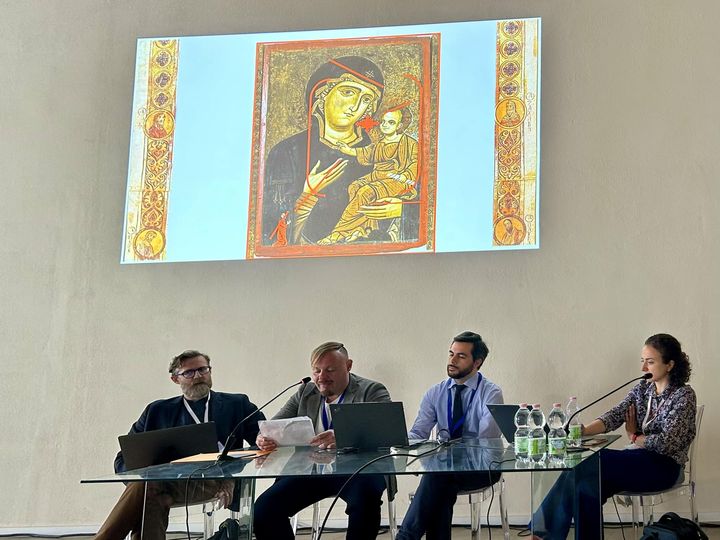ITSERR’s Contribution to the Innovation of Religious Studies
How to make use of the newest techniques in Religious Studies? How to use AI in research? These were the leading questions in the full day session of ITSERR at #EuARe2024.
Semantic Analysis
Two examples were given in the presentations of Marianna Napolitano and Usman Nawaz who demonstrated their project on semantic analysis of Old Slavonian Terms. It was fascinating to see how old texts seem to resist our advanced technical possibilities as some words, phrases and letters are hard to make visible in a digitized text. In such cases researchers need to throw in their inventive skills and develop e.g. new Unicode mapping tables. More related to religious content is the Sanskrit translation of the Nicene-Constantinopolitan Creed. Igor Spanò did an digital semantic analysis of a renowned translation of this confessional document and came up with very interesting results.
These presentations once again show the importance of RESILIENCE as a separate research infrastructure on Religious Studies.

Results of Two Innovative Researches
Federico Ruozzi, Marco Papasidero and Antonio Pio Di Cosmo presented the first results of two innovative researches: the first on the human gaze using eye-trackers in sacred spaces and sanctuaries, with two case studies constituted by sanctuaries in Tuscany and Emilia. The second deals with the concept of blasphemy through the AI modification of a series of more than 200 devotional images of the Virgin Mary, presented to a test group of users to express their perceptions of this concept and their ability to recognise the modified ones. Also the work on the development of a database of early modern Italian Marian legends, with 400 texts currently being acquired through OCR processing was explained.
ITSERR
ITSERR is the project that supports RESILIENCE with the technical tools and facilitates dialogue between scholars of various disciplines.